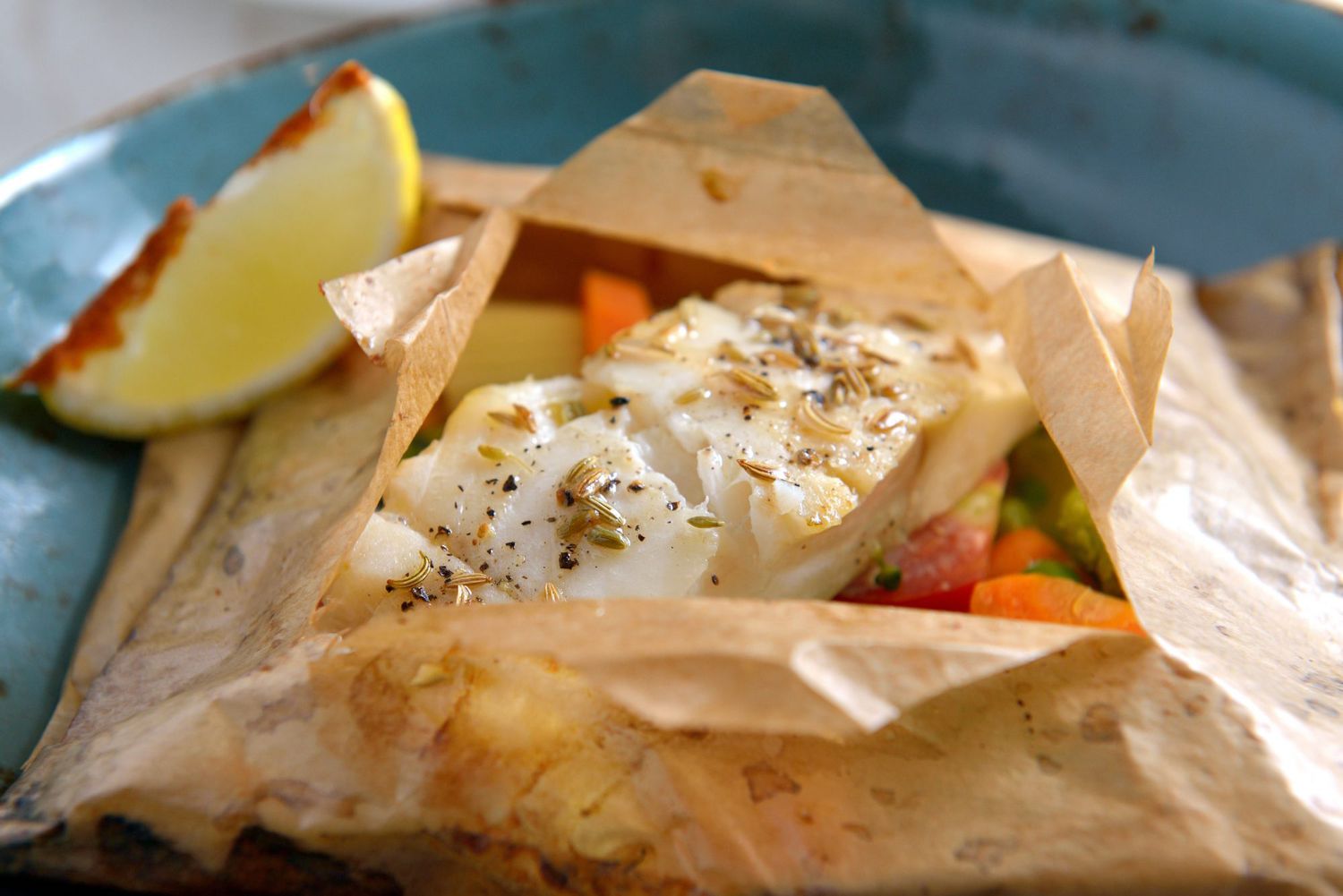How to Cook and Eat More Fish During the Winter (Without Holding Your Nose)
According to statistics from NOAA Fisheries, two-thirds of Americans prefer to eat their fish in restaurants — especially during the winter when you’re trapped inside with the windows shut tight, and the odor lingers in curtains and rugs for days after cooking it. After all, it’s not like you can go outside to grill it when there’s a foot of snow on the ground and the wind chill is zero.
But with restaurant interiors closed or reduced in capacity, more of us are now buying and eating more fish at home. In a recent Bloomberg article, journalist Sarah Halzack noted that by the end of 2020, seafood sales were about 25 percent stronger than they had been the previous year. In response to that, she writes, “Conventional supermarket Stop & Shop said it is carrying a bigger selection of seafood as shoppers have increased purchases, while Whole Foods Market is experiencing ‘huge growth’ in frozen seafood, according to Wesley Rose, the chain’s vice president for seafood. That led the upscale chain to expand its selection to include value packs of halibut, barramundi, and arctic char. With fresh offerings such as red snapper also selling well, Whole Foods has added black cod and farm-raised striped bass to fish counters at most of its stores.”
In addition, direct-to-consumer fish and seafood companies have blossomed, pivoting from wholesale business or starting up directly in response to pandemic demand. Some are generalists; others specialize in regional, sustainable products. Now you can get anything from Florida stone crabs to Chilean salmon delivered.
If you feel left out of or bewildered by this valuation, you aren’t alone. For starters, the statistics don’t break down where in the country, like Florida or California, these purchases are happening. They also don’t evaluate if they’re consumers who are already old hands at buying and cooking fish. So we hear you if you’re thinking, Why would I want to cook barramundi or striped bass during a blizzard — and how do I do it, anyway?

Health Benefits of Fish
The general conception among the fish-eating public is that oily fish, such as salmon, mackerel, and herring, are best for your health because of their good fats. Nutritionist Lisa Richards says, “One three-ounce serving of salmon offers a significant source of omega-3 fatty acids as a food source. A diet with two-to-three servings of salmon or fish per week can help to reduce blood pressure and obesity.”
But all fish offer a heaping amount of protein and B vitamins as well as other vitamins and minerals, such as vitamin D and selenium. As for something perhaps more obscure like striped bass, Richards says, “A serving of six ounces will provide the consumer with roughly 18 percent of their recommended daily value of iron. Iron is essential for making hemoglobin which circulates oxygen throughout the body. By adding striped bass into your regular diet pattern, you can improve your energy, cognition, and overall feelings of wellbeing.”
Cook Right Away
Still, while salmon, tuna, black cod, Arctic char, halibut, and swordfish might be great for helping you fight everything from the coronavirus itself to the pandemic blues, they can sure send out a stench — especially if you bought some during your last supermarket run but didn’t feel like having it right away. That’s the number-one mistake.
Experts always recommend cooking fish as ultra-fresh as you can find it and on the very day you buy it. This is because fish contains a chemical called trimethylamine oxide that smells like ammonia as it breaks down. The longer that you keep fish around, the more it’ll make you hold your nose when you cook it.
If preparing fish immediately is unrealistic for you, buy vacuum-packed or fresh-frozen fish or seafood. Fillets that have been sealed away from oxygen as soon as they’re butchered keep longer; ditto crustaceans like crabs and shrimp that are often cooked and/or frozen right on the boats.
Or Don’t Cook It at All
Many cooks swear by employing citrus juices or vinegar in fish recipes to keep the kitchen pleasantly fragrant. Others recommend rubbing steaks and fillets with aromatics such as garlic and onions, or marinating them. Most of us endorse a liberal sprinkling of herbs and spices. Granted, all of these ingredients taste pretty good with just about any fish or shellfish.
But as soon as your fillets hit an open pan, that fishy smell will disseminate into air molecules, no matter how you choose to dress it.
Instead, take a page from cultures around the world and use those same brining and fermenting acids to “cook” your fish. By making large batches of a classic Latin American ceviche, Scandinavian pickled herring, or Asian fermented flounder, you can vary the tastes at your table and ensure that you have several servings for the week to boot. The kitchen will remain odor-free, and you can offer these health-preserving dishes as an appetizer or light meal instead of a singular main course.
While pickled herring and fermented flounder might call for certain kinds of fish, the flavor variations are endless. Meanwhile, ceviche and its relative, tiradito, have endless adaptation possibilities in both flavors and textures. You can utilize anything from firm-fleshed white fish like snapper or bass to darker, oilier tuna or kingfish to scallops and shrimp.
Conceal It
If you prefer it heated, roast or bake fish in parchment or foil, topped with your preference of flavorings. The envelope keeps the steam in; when you’re ready to puncture it, you can always carry it outside or do it next to an open window. But if you add some lemon juice and white wine to the package, chances are you’ll have a savory, not smelly, fillet of grouper or mahi-mahi on your hands.
Similarly, poaching or preparing it sous vide will keep the fumes in the cooking liquid or in the pouch. If you enjoy air-frying your food, you can also prepare fish this way for a flaky, tender finish. But you will have to clean the air fryer thoroughly afterward.
Disguise It
Where a little spritz of lemon might not do a lot, a whole bunch of crushed tomatoes and a few cups of intense stock do a great deal more. If you do have fish that’s lasted longer than you might have wished in the fridge, or even a couple of pieces of different kinds of fish and shellfish, make a cioppino or chowder.
By gently stewing fish in a large amount of liquid — especially a soup where you’re sweating a soffrito or mirepoix first, which recognizably scents the air at once — you don’t have to worry about other odors. Or fold a variety of fish and shellfish into a paella, or jambalaya that relies first on a holy trinity, and second on the addition of poultry and/or zesty sausage.
The Instant Pot is a great tool for making quick work out of fish stews, soups, chowders, and rice dishes, and it also seals in odors. Again, like the air fryer, you’ll have to clean it well afterward. But you’d have to do that anyway. And better one pot than a whole house of curtains, pillows, and rugs, correct?
Related:
- 15 Recipes That Start With Frozen Fish
- 8 Mistakes You Might Be Making When Cooking Salmon
- Browse our collection of Fish Recipes.




